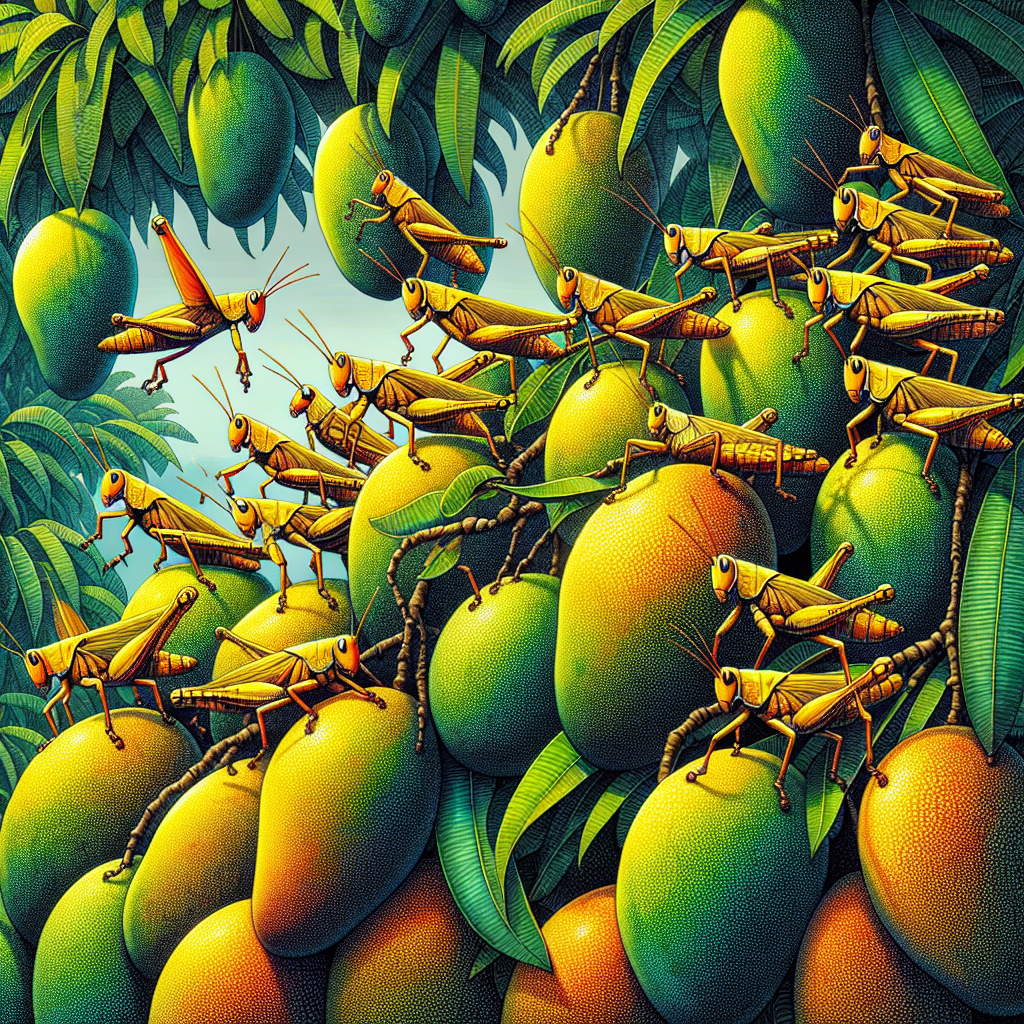Mango Hoppers: A Detailed Analysis of a Plant Pest
Mango hoppers, encompassing various species within the family Flatidae (primarily Idioscopus clypealis and related species), are significant pests of mango and other fruit trees in tropical and subtropical regions. Their status as a pest stems from their feeding habits, reproductive capacity, and the damage they inflict on plants.
Damage Caused to Plants:
Mango hoppers primarily damage plants through their feeding. Nymphs and adults use their piercing-sucking mouthparts to feed on plant sap, primarily from the young leaves, flowers, and fruit. This sap-sucking leads to several detrimental effects:
- Honeydew Production: Large quantities of honeydew, a sugary excrement, are excreted. This sticky substance coats leaves and fruits, hindering photosynthesis and attracting sooty mold fungi, which further reduces plant vigor and fruit marketability. Sooty mold can severely affect fruit quality, making it unsaleable.
- Leaf Curl and Distortion: Feeding on young leaves causes them to become stunted, curled, and distorted. This affects the plant’s ability to photosynthesize effectively.
- Reduced Fruit Set and Quality: Feeding on flowers can reduce fruit set, and feeding on developing fruits can cause them to be small, deformed, and of poor quality. This directly impacts yields and economic returns for mango growers.
- Plant Weakness and Increased Susceptibility: The combined effects of sap loss, honeydew production, and sooty mold weaken the plant, making it more susceptible to secondary infections and diseases and reducing overall tree longevity.
Life Cycle and Impact at Each Stage:
The life cycle involves egg, nymph, and adult stages.
- Eggs: Eggs are laid in clusters on the underside of leaves or sometimes on twigs. The impact at this stage is minimal, but a large egg mass indicates a potential building problem.
- Nymphs: Nymphs are wingless and typically cluster together on the underside of leaves. Their feeding causes the most significant damage during this stage due to their large numbers and continuous feeding. Honeydew production is high.
- Adults: Adults are winged and are able to move freely between plants. They continue to feed on sap, reducing plant vigor and contributing to honeydew production.
Plant Species Affected:
While mango ( Mangifera indica) is the primary host, mango hoppers also infest other fruit trees such as guava, litchi, and other related species.
Variations in Impact:
The severity of the infestation can vary depending on factors such as the intensity of the infestation, environmental conditions (temperature, humidity), plant health and variety, and the presence of natural enemies. Drought stress can exacerbate the damage caused by hoppers.
Feeding Habits and Reproduction Rate:
Mango hoppers are polyphagous, feeding on various parts of host plants. Their high reproductive rate contributes significantly to their pest status; a single female can lay hundreds of eggs throughout her lifetime.
Economic and Ecological Damage:
The economic damage caused by mango hoppers can be substantial, particularly in regions where mango cultivation is a major agricultural activity. The loss in fruit yield, reduced fruit quality, and the costs associated with pest management together can significantly affect farmers’ income. Ecologically, the damage to native plant communities could occur if the pest spreads to non-cultivated areas. Quantifying the precise economic damage requires regional-specific studies.
Effective Insecticide Controls (with Cautions):
Several insecticides are effective against mango hoppers, but resistance development is a major concern. Always refer to the specific label instructions before application. Note: The following is for informational purposes only and shouldn’t be considered an endorsement of specific brands. Consult local agricultural extension services for appropriate insecticide recommendations for your region.
- Insecticides (with active constituents): Many conventional insecticides containing active ingredients such as chlorpyrifos, imidacloprid, and malathion have been used. However, due to resistance development and environmental concerns, their use is often discouraged or regulated. Newer insecticides with different modes of action need to be applied strategically to delay the development of resistance.
- Safety Precautions: Always follow the manufacturer’s instructions regarding application, personal protective equipment (PPE), and safety measures to prevent human exposure and environmental contamination.
Organic and Integrated Pest Management (IPM):
IPM strategies are crucial for sustainable mango hopper management:
- Monitoring: Regularly inspect plants for signs of infestation – honeydew, sooty mold, leaf curling, and hopper presence.
- Cultural Practices:
- Pruning: Proper pruning improves air circulation, reducing humidity which can lower hopper populations.
- Sanitation: Remove infested leaves and branches to reduce the overwintering population.
- Biological Control: Encourage natural enemies such as predatory insects (ladybirds, lacewings) and parasitoids.
- Organic Insecticides: Neem oil and insecticidal soaps are relatively safe and effective options for controlling mango hoppers. their efficacy might be enhanced by combining them with other cultural or biological practices.
- Resistant Varieties: Explore locally adapted, relatively resistant mango cultivars (if available for your region).
Preventative Measures:
- Companion Planting: Some plants might repel or attract natural enemies of mango hoppers, though research on specific effects requires more evidence.
- Crop Rotation: Not applicable in perennial mango orchards.
Early Signs of Infestation:
- Presence of honeydew on leaves and fruits.
- Sooty mold growth.
- Leaf curling and distortion.
- Direct observation of nymphs and adults.
Insecticide Resistance Management:
- Rotation: Use insecticides with different modes of action to prevent resistance development.
- Thresholds: Only apply insecticides when pest populations exceed economic thresholds.
- Integrated Approaches: Combine insecticides with other IPM techniques.
Recommendations for Suspected Infestation:
- Carefully identify the pest.
- Monitor the population level.
- Implement IPM strategies, starting with cultural controls and biological control.
- Use insecticides only as a last resort, and use them only after careful consideration of the risks and benefits, and always following label instructions precisely. Consult local agricultural extension offices for guidance.
This detailed information emphasizes the complexities of mango hopper management, highlighting the need for integrated approaches that balance ecological health, economic viability, and effective pest control. The absence of readily available quantified data on economic and ecological damages underscores the need for further research in this area.
